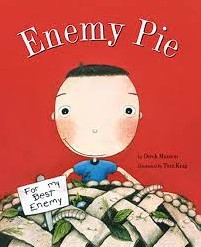Welcome to Feature Friday! Where we showcase a new teacher each week in an interview. For past Feature Friday interviews, go here.
Today’s Feature Friday is highlighting Matthew Winters. Matthew is a Jr. High English/creative writing/yearbook teacher, and technology instructional coach. Talk about the jack of all trades in the education world! Here’s what Matthew has for us today!
What is your favorite part of teaching Jr. High?
“It is the energy the students bring to the classroom. Most students are starting to figure out who they are as a person and what they like to learn about and it is a genuinely great time to teach students. They are inquisitive and engaged in a way that encourages great discussions. A lot of people have misconceptions about teaching junior high school, they have too much energy or they are frustrating, but nothing could be farther from the truth.”
What is one of your favorite units you’ve taught?
“Every year I do a unit on Romeo and Juliet and I use Michael Ford’s ‘Hip Hop Architecture’ to teach students about rhyme scheme and poetry. We break out the legos, build little cities out of lines from Shakespeare and famous songs, and end up making a 3D city of their own poetry. It gives them another perspective on poetry and how it looks and feels. During that same unit, we take an old sword fighting of Shakespeare’s book that I found and actually choreograph the fights in Romeo and Juliet using markers/pens as swords. It gives another perspective on a play that students often come into school thinking is a romance. It helps them to visualize the performance rather that just seeing it on the page or screen.”
If you could recommend one book to read, what would it be and why?
“A few years ago I met Dan Ryder (Twitter: @WickedDecent) at a conference, read his book with Amy Burvall (@Amyburvall) Intention: Critical Creativity in the Classroom. Since then I have used his thoughts on creatively accessing student growth, adding choice in a project, adding media in a variety of ways into our classroom, and looking out for more than just the academic portion of a student’s life in my class, looking for social emotional learning and creativity throughout the curriculum. That would be my recommendation, but better yet go follow both Amy and Dan on Twitter and learn with them.”
How have you seen education change in the years you’ve taught?
“Technology has probably had the largest impact. Over the last year, before COVID, I built up grant money to buy a classroom set of Oculus Quests. This gives students the opportunity to experience cutting edge technology in the classroom and it is just becoming more and more accessible to schools. However, personally I have felt a shift in how we are accessing students and realizing that students are more than just academic profiles. The shift towards discussions and plans on social/emotional learning, portfolios instead of tests, and student choice has refreshed a lot of teachers in engaging ways.”
How do you use student voice in your classroom and what outcomes have you seen from it?
“Student voice is a key part of my classroom. I try not only to encourage asking questions of the course and its curricula, but also how we do assignments, due dates, and how students present their materials. This has led to some really engaging moments discussing novels, but also discussing the purpose of English Language Arts classrooms and the ways that students are assessed. As a teacher, I have to let go of the classroom reins to some degree, but it has helped a lot of my students find the purpose in the classroom and some have reengaged with the course materials in interesting ways.”
What is your favorite way to use technology in the classroom?
“First off, technology for technology’s sake is not a way to run a classroom. Make sure that there is a purpose to using the technology and that it is appropriately engaging students. With that said, I love making videos with students. I started by doing a silent film festival with my students during my first year and now we do projects with the United Nations Sustainable Development Goals to show how to change the world. As an English teacher, making videos hits so many of the standards I need to have students learn in one project it was just simply a great choice, but also it is just so much fun to make videos with my students.”
What advice do you have for teachers who are worried about using tech in their classrooms?
“Take a bit of time every day. Learn a new skill and add to it the next day. By the end of the year, you will be so far from where you were that you forget what it was like to teach without technology. When I started 3D printing with students I had no background in the process. I learned each day by trial and error and now five years later I can do things that I had no idea I could do like prototyping frisbees for PE or printing models for set design or making branded items for my school.”
I love walking away from an interview with new people on Twitter to follow! Thanks again, Matthew for the great interview. I hope we can all take these insights on technology and apply them to our classrooms.











